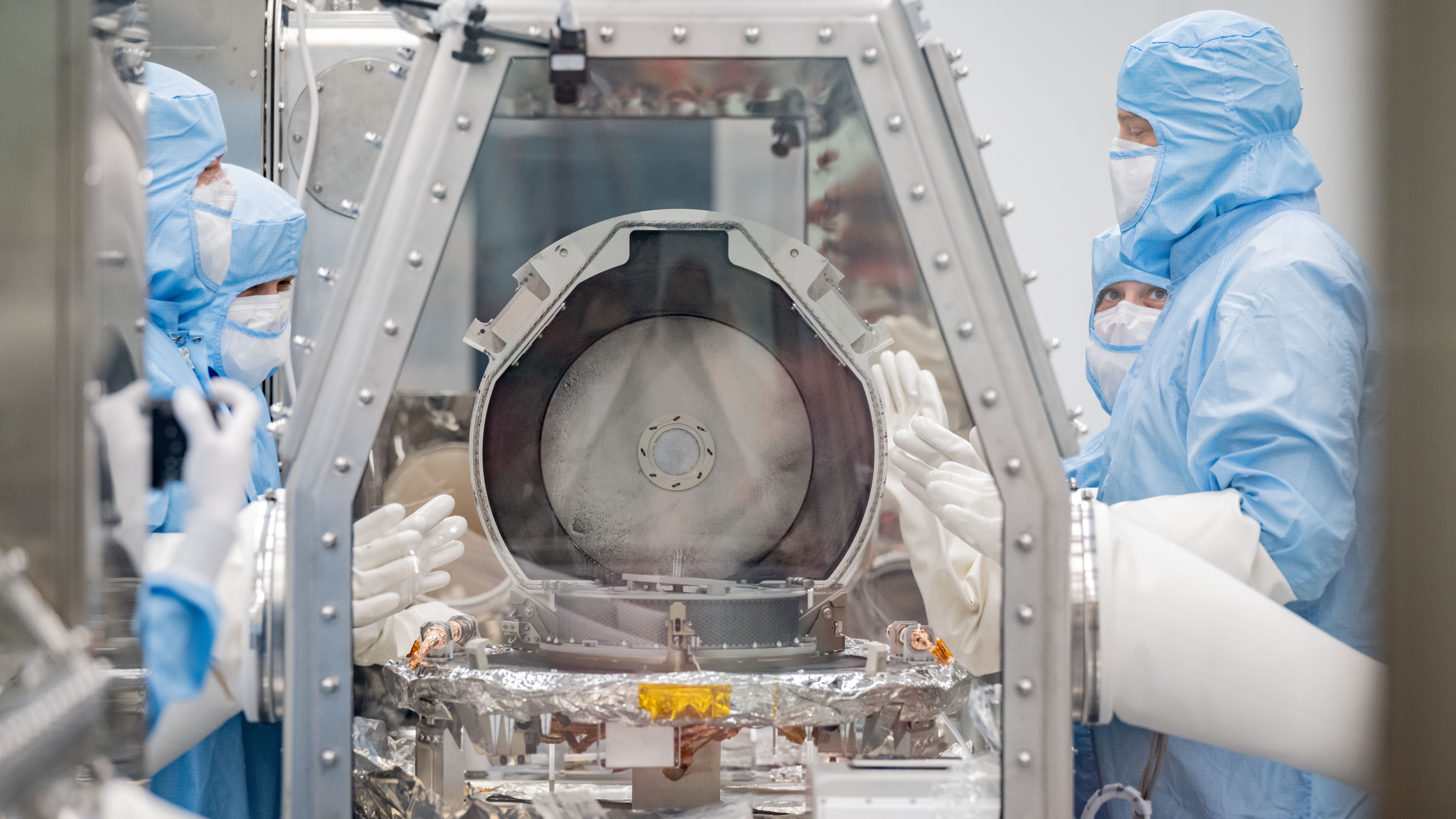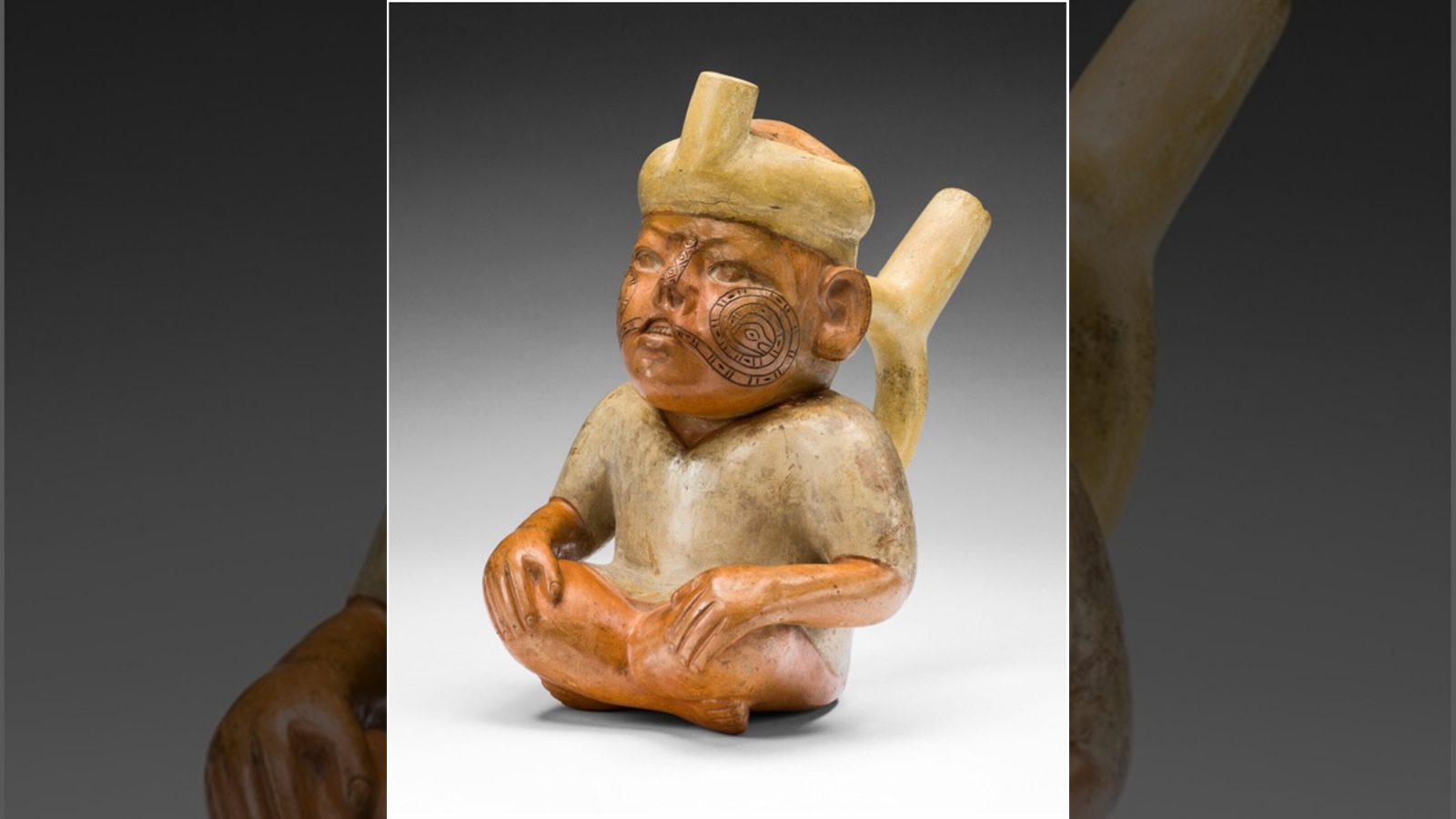NASA reveals 1st sample collected from potentially hazardous asteroid Bennu to public — and it may contain the seeds of life
The sample from the asteroid Bennu, collected by the OSIRIS-REx mission, was unveiled at the Smithsonian's National Museum of Natural History in Washington, D.C., on Friday.

An Earth-threatening asteroid may be the last thing you want to see — unless it's in the confines of a museum. Today (Nov. 3), the Smithsonian's National Museum of Natural History revealed the first public display of a sample collected from the asteroid Bennu, which NASA deems a "potentially dangerous object."
The sample — 3.5 to 8.8 ounces (100 to 250 grams) of rocky space rubble collected by the OSIRIS-REx spacecraft — is thought to contain some of the earliest precursors to life and is the first chunk of a space rock ever grabbed by a NASA mission.
NASA scientists first revealed the sample on Oct. 11 after it hurtled back to Earth aboard the OSIRIS-REx capsule at speeds of up to 27,000 mph (43,000 km/h). After a seven-year, 4 billion-mile (6.4 million kilometers) round trip, the capsule deployed its parachute and safely landed in the Utah desert before being transported to Johnson Space Center in Houston, where scientists began analyzing its contents for signs of life beyond our planet.
Related: NASA's OSIRIS-REx mission almost bit the dust — then Queen guitarist Brian May stepped in
"The OSIRIS-REx mission is an incredible scientific achievement that promises to shed light on what makes our planet unique,” Kirk Johnson, the Sant director of the National Museum of Natural History in Washington, D.C., said in a statement. "With the help of our partners at NASA, we are proud to put one of these momentous samples on display to the public for the first time."
Bennu is a potentially hazardous asteroid that has a 1-in-2,700 chance of striking Earth in the year 2182 — the highest odds of any known space object. But the scientists are more interested in what's trapped inside the space rock: the possible extraterrestrial precursors of life on Earth.
"This is the biggest carbon-rich asteroid sample ever returned to Earth," NASA Administrator Bill Nelson said at a news conference upon the sample's return. "Carbon and water molecules are exactly the elements we wanted to find. They're crucial elements in the formation of our own planet, and they're going to help us determine the origins of elements that could have led to life."
Get the world’s most fascinating discoveries delivered straight to your inbox.
Earth's water is older than the planet itself and was probably brought here by asteroid and comet impacts. But water likely wasn't the only material asteroids brought to Earth; the building blocks of life likely hitched a ride on a space rock, too. Bennu is a B-type asteroid, which means it contains high amounts of carbon and, potentially, many of the primordial molecules present when life emerged on Earth.
Some of these building blocks — including uracil, one of the nucleobases for RNA — were recently found on the asteroid Ryugu by the Japan Aerospace Exploration Agency's Hayabusa2 spacecraft, which returned to Earth with its rock sample in 2020. OSIRIS-REx mission scientists are hoping to find other potential precursors for Earth's biology inside the Bennu sample.
The sample was collected after nearly two years of searching for a landing site on Bennu's craggy surface. Upon contact with the asteroid, OSIRIS-REx fired a burst of nitrogen from its Touch-and-Go Sample-Acquisition Mechanism — to both stick the landing and prevent the craft from sinking through the asteroid.
The blast sent rocks and dust careening around the craft, and some of that rocky debris landed in a canister aboard OSIRIS-REx. A follow-up blast of OSIRIS-REx's thrusters later lifted it from Bennu, and the spacecraft completed a number of flyovers before leaving the asteroid for Earth in May 2021.
The Smithsonian is the first museum to publicly display a sample from Bennu, alongside the returned OSIRIS-REx capsule and the Atlas V 411 rocket that launched it. The display is located in the Janet Annenberg Hooker Hall of Geology, Gems and Minerals. Researchers at the Smithsonian will also analyze another sample behind the scenes for signs of life's precursors.
"Having now returned to Earth without being exposed to our water-rich atmosphere or the life that fills every corner of our planet, the samples of Bennu hold the promise to tell us about the water and organics before life came to form our unique planet," Tim McCoy, the museum's curator of meteorites, who worked on the OSIRIS-REx mission, said in the statement.

Ben Turner is a U.K. based writer and editor at Live Science. He covers physics and astronomy, tech and climate change. He graduated from University College London with a degree in particle physics before training as a journalist. When he's not writing, Ben enjoys reading literature, playing the guitar and embarrassing himself with chess.


